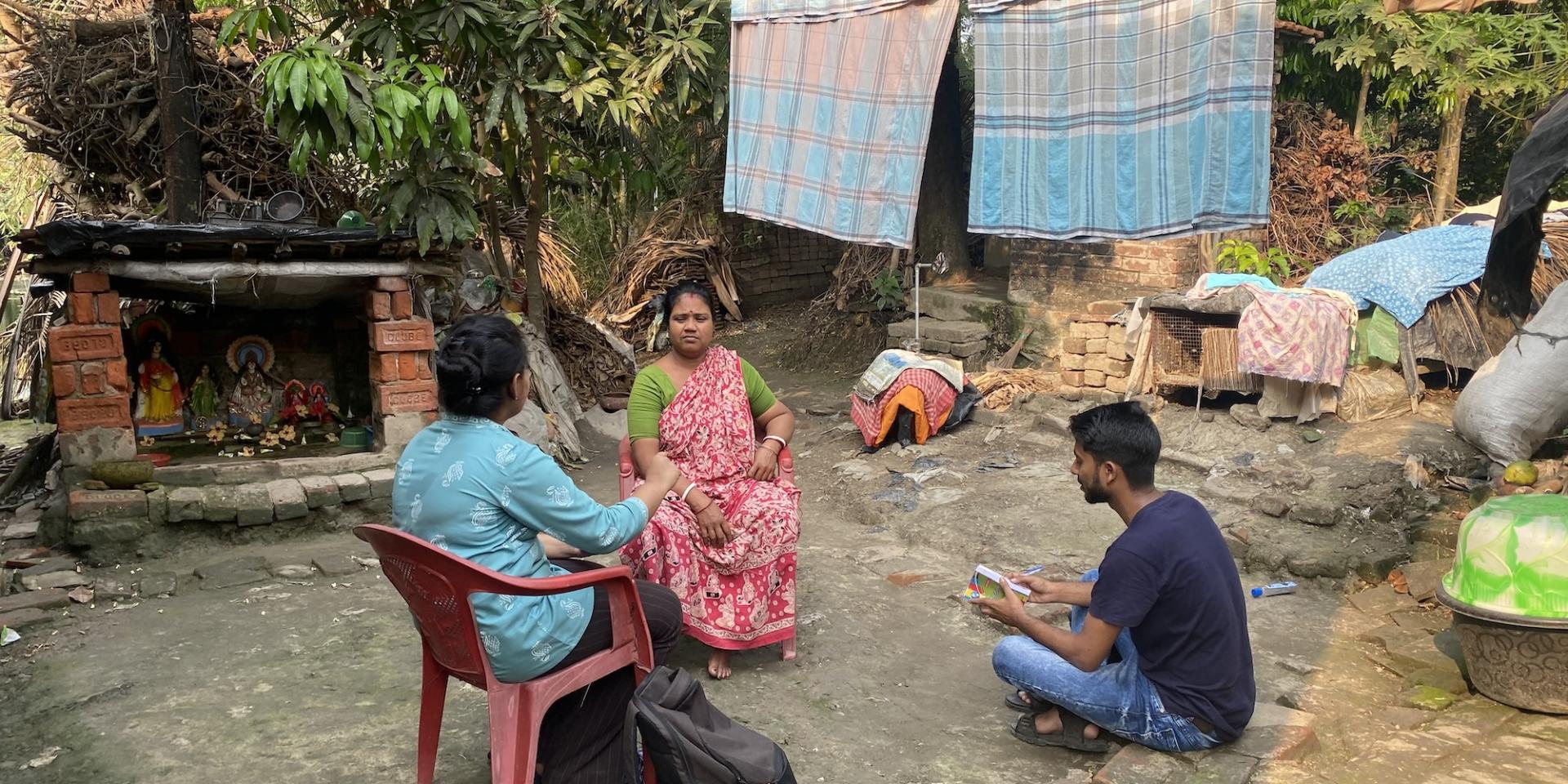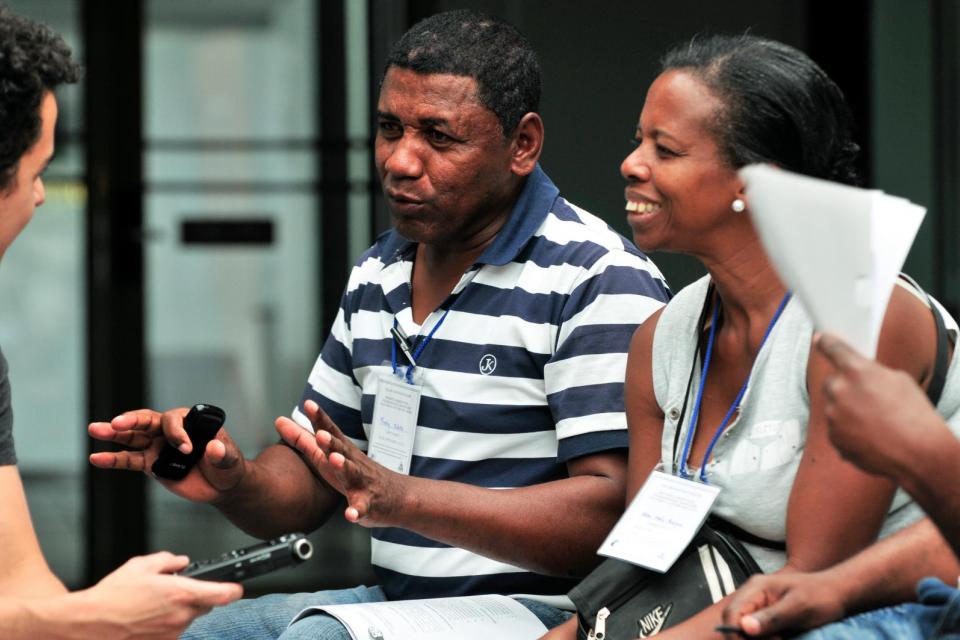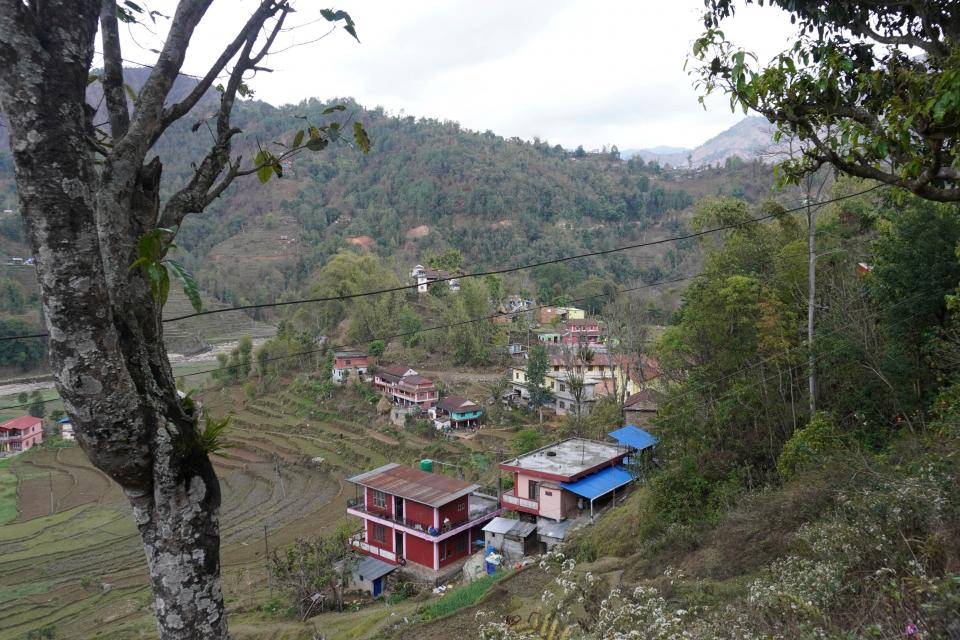Navigating the complexities of field data collection: a reflection on using the pro-WEAI tool
 Photo: Hom N Gartaula.
Photo: Hom N Gartaula.
Measuring empowerment is not easy. But it is particularly important for projects that aim to empower women, not just reach or benefit them. Using the pro-WEAI tool has its complexities, but also unexpected lessons about cultural translation in data collection.
The interpretation of empowerment varies across cultural, social, and economic contexts, highlighting the need for standardized frameworks to measure it effectively. Yet, tools need to be flexible and adaptable, capable of accommodating complexity while remaining user-friendly and practical.
The Project-level Women’s Empowerment in Agriculture Index (pro-WEAI) is a structured framework for measuring women’s empowerment in agricultural systems. Supported by the Methods module of the CGIAR Gender Impact platform, pro-WEAI is being used by the Work Package 2 – EMPOWER of the CGIAR Gender Equality initiative (HER+) to unpack how context-specific socio-technical innovation bundles, co-created with multiple stakeholders in learning labs, can empower women and enhance their resilience to climate change.
For example, in the past, women have been given agricultural technologies, but without much thought given to how they will use the technologies. This approach did not result in much change. The HER+ initiative is taking a different approach by unlocking the ‘how’ of empowering women in technology use by involving them as partners and agents of change.
A large part of the project is gathering data on the empowerment aspects of adopting technologies and innovations. Adapted from the Women’s Empowerment in Agriculture Index (WEAI), we used the pro-WEAI quantitative tool for baseline data collection in treatment and control villages in West Bengal, India where the HER+ project is being undertaken.
This blog outlines our reflections and insights gained about the complexities and challenges we encountered while using the tool. Our initial experience with pro-WEAI in West Bengal villages highlights the intricacies of cultural translation in data collection, emphasizing the need for cultural sensitivity.
Evolution of the pro-WEAI quantitative tool
Adapted from the Women’s Empowerment in Agriculture Index (WEAI), the pro-WEAI measures the impact of agricultural development interventions on women’s empowerment. Ten indicators are categorized into three domains: intrinsic agency (power within), instrumental agency (power to), and collective agency (power with). Refined over a number of iterations, pro-WEAI tool addresses some limitations of the WEAI by including topics like mobility and attitudes toward intimate partner violence against women. The flow and phrasing of some questions have also been improved.
Overcoming resistance to the length of the questionnaire
We found that implementing the pro-WEAI tool is challenging due to the length of the questionnaire. It often took more than an hour to complete, burdening farmers who are already juggling household and agricultural duties.
Administering the questionnaire typically involves surveying both a woman and a man from each household. Committing the time required to complete the questionnaire proved difficult for men who commute for off-farm or non-farm jobs, and women were equally time poor due to taking care of both the household and agricultural activities.
By discussing the problem with community leaders, we made some of them community mobilizers for data collection. However, resistance to the tool persisted among the community to some extent.
“It is difficult to convince women and men to spend so much time on surveys. They have other work; men are out the entire day involved in several livelihood activities and the women are very busy raising livestock and managing their households. This survey is taking away precious hours from their already busy days.” Source: Woman from Balarampur village, working as a data collection community mobilizer
The challenge of translating both words and concepts
To ensure the pro-WEAI is a standardized measurement tool, it is recommended to maintaining the wording of the questionnaire. However, this leads to challenges in translation, transliteration and conceptualization. For example, during training sessions, local enumerators grappled with how best to understand the tool and how to ask farmers the right questions. Translating the questionnaire is not merely about translating words; it’s about translating concepts. Many of the concepts embedded in pro-WEAI are rooted in dominant cultural paradigms that did not fully align with local perspectives.
For example, questions about autonomy in income that required respondents to consider hypothetical scenarios was difficult to translate. Another example is the concept of ‘access’. While the closest Bengali translation may be উপলব্ধতা it does not capture the nuanced meaning of the term as it is detailed in the tool. We tried to address this concern by including relevant local examples, as suggested by the Pro-WEAI guideline. For certain questions, we also left concepts to be interpreted by the respondents. For example, in the intimate partner violence module, we omitted detailed discussions about hypothetical scenarios to prevent introducing bias and to capture respondents’ true perspectives.

Researchers found that implementing the pro-WEAI tool is challenging due to the length of the questionnaire. Photo: Hom N Gartaula.
Generalized assumptions and reality checks
Initially there were concerns from enumerators about inquiring about intimate partner violence due to the sensitive nature of the subject, but they did not face too many challenges. These questions attempt to gauge respondents’ perception of intimate partner violence through hypothetical scenarios, not their own experience, often eliciting idealized responses. And the prevailing awareness within the communities of discouraging the acceptance of intimate partner violence has contributed to women feeling comfortable responding to these questions.
However, challenges arose when respondents were asked to quantify the time spent on their daily activities, particularly for measuring work–life balance, which is linked to the indicator about ‘instrumental agency’. This seemingly innocuous question was problematic because women felt uneasy defining the exact amount of time they spent on activities such as bathing, grooming, or simply relaxing. Their reluctance to quantify time spent on personal care activities reflects broader, deep-rooted social norms that stigmatize women’s leisure time, as it may be perceived as idleness or of low productivity. The probing nature of these questions exacerbated this pressure, potentially triggering discomfort and a sense of privacy invasion. Local NGOs were invaluable as mediators for us in these tricky scenarios, helping women to understand the need for such a level of detail. Yet resistance from respondents often led to non-responses.
Consciously looking for nonverbal cues to document
After using the tool, we realized that the pro-WEAI offers a unique opportunity to capture not only verbal responses, but also nonverbal responses. Women’s agency is not always articulated through words; it can also be observed in actions such as refusing to answer certain questions or displaying discomfort when discussing deeply personal topics. Therefore, tools like pro-WEAI have an opportunity to deliberately to document nonverbal observations while interviewing respondents. Although there is already a space in the tool to document observations, it is rarely filled in with data that can be analyzed. Prioritizing training for enumerators to consciously look for such nonverbal cues is essential, as it enriches data quality and can also enhance the process of data interpretation.
Embracing cultural complexity
Our initial experience with the pro-WEAI in West Bengal villages highlights the intricacies of cultural translation in data collection, emphasizing the need for cultural sensitivity. This experience convinced us of the benefit of integrating the pro-WEAI qualitative tool alongside the quantitative tool to capture nuanced insights. We propose that pro-WEAI is ideal for sequential mixed-method research, starting with quantitative data collection followed by focused qualitative inquiry to fully address any missed or unexplored areas. By quantifying indicators that can be standardized and addressing culturally nuanced concepts qualitatively, we can potentially shorten the questionnaire, reduce respondent fatigue, eliminate redundancy and improve data quality and participant engagement.


